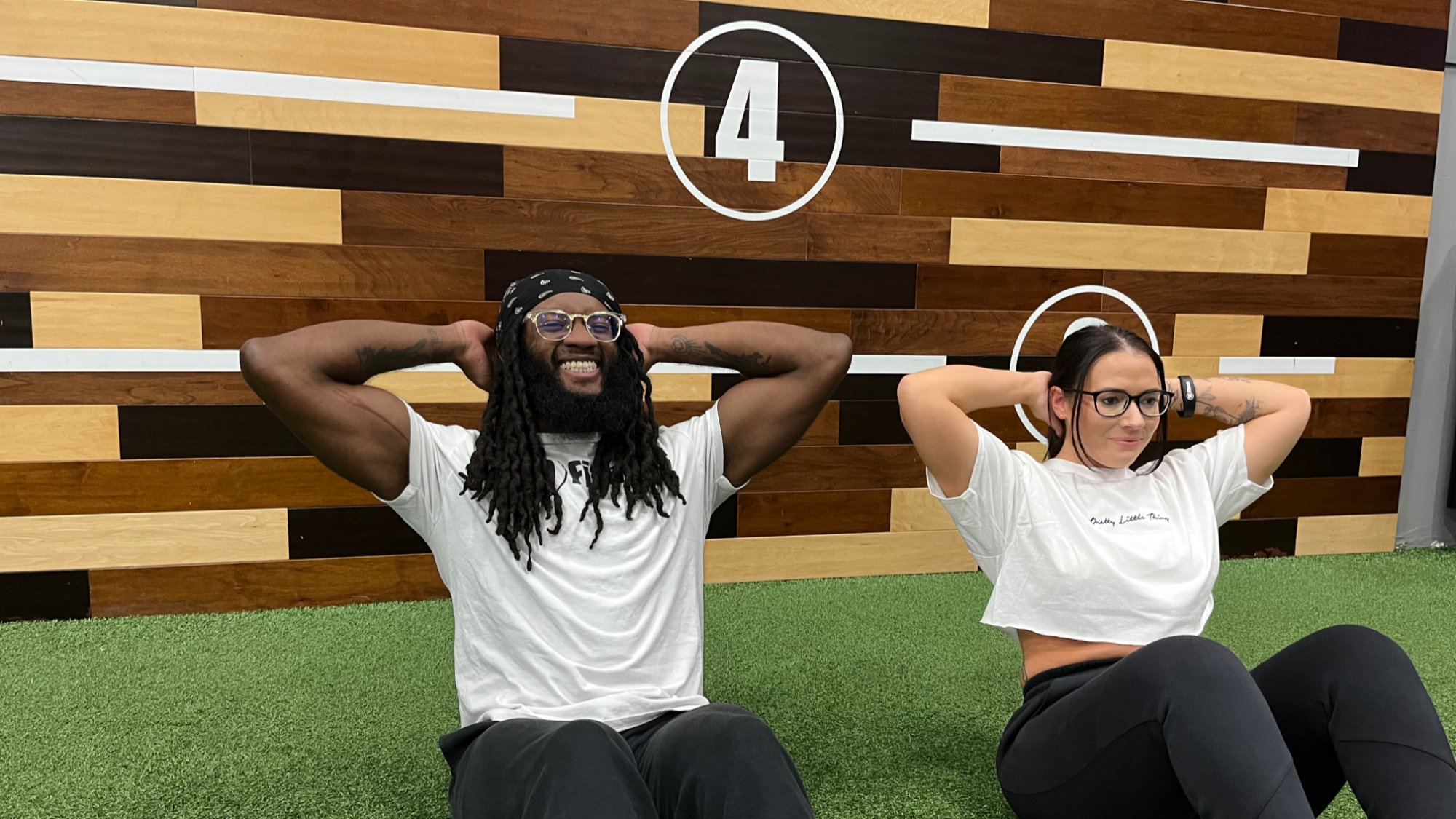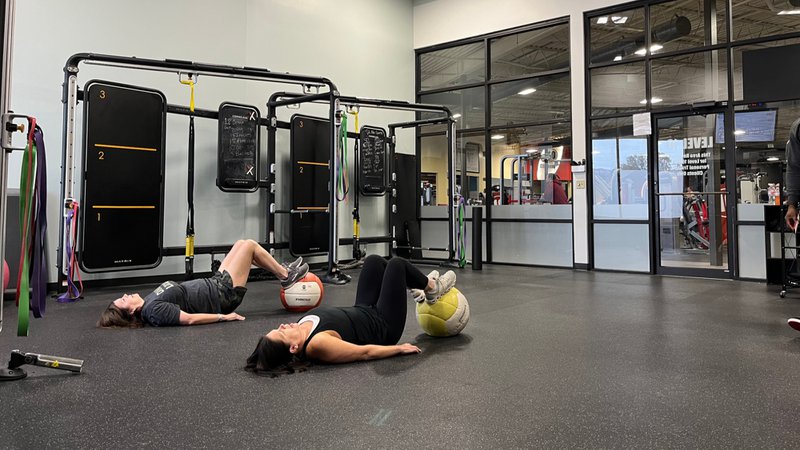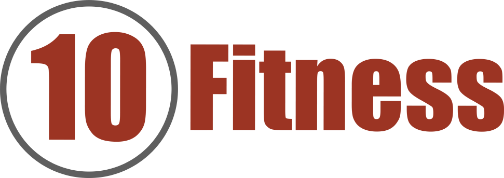
Want a stronger core but not sure where to start? You're not alone. At 10 Fitness, we work with many people who want to tighten their midsection, move better, and feel good, without pricey gear or long workouts. The good news? You don’t need a six-pack to build a strong core. You just need the right moves, good form, and a solid, simple core workout plan meant for beginners.
Key Takeaways:
- The core includes transverse abdominis, obliques, rectus abdominis, pelvic floor, diaphragm, and spinal stabilizers—not just abs.
- Core strength improves balance, posture, injury prevention, and back support.
- Weak cores lead to compensation by the lower back, often causing pain.
- Effective beginner moves: Dead Bug, Glute Bridge, Bird Dog, Modified Side Plank, Bear Plank with Knee Taps.
- Start with 2–3 core sessions per week, 3 sets of 8–15 reps or 30–45 sec holds.
- Track progress via plank time, reps, and form quality.
- Suitable for older adults and those with back pain using low-impact floor or seated routines.
- Proper breathing and bracing are important for safe core training.
- Don’t overdo crunches; focus on slow, controlled, full-core movements.
- Visual aids and guided videos help improve learning and form.

Core Workouts for Beginners: Build Strength, Stability, and Confidence
Starting your fitness journey can indeed feel overwhelming. However, by focusing on core workouts for beginners, you can initiate a smart and sustainable way to begin. When your core is strong, consequently, everything else becomes easier—from walking and lifting to improving posture and preventing injury.
At 10 Fitness, we believe that fitness should feel accessible, effective, and safe. Therefore, we emphasize building a strong foundation through beginner-friendly core training. This guide covers everything you need to know about why core strength matters, how to train it properly, and how to track real progress over time.
Core Workouts for Beginners: Start with Understanding the Core
Your core is more than just your abs. In fact, it includes deep, stabilizing muscles like the transverse abdominis, obliques, rectus abdominis, pelvic floor, diaphragm, and spinal stabilizers. These muscles wrap around your trunk and hips, helping you stand tall, move efficiently, and stay balanced.
Because every movement—whether it’s walking, twisting, reaching, or even laughing—engages your core, building strength here pays off across your entire body. A strong core reduces the risk of injury, improves posture, and enhances overall mobility.
Why Core Strength Is Essential for Beginners
When you're starting out, it's tempting to chase visual results like six-pack abs. However, true strength begins deeper. While the rectus abdominis creates the six-pack look, it’s only one piece of the puzzle. Real core strength comes from deeper muscles that stabilize and support your movements.
This foundation helps you move with control and reduces the risk of overloading your back. According to research from the Hospital for Special Surgery (HSS), strengthening your core improves alignment and protects your spine during daily tasks. Likewise, the U.S. Physical Activity Guidelines recommend core training for injury prevention, especially for beginners and older adults.
Core Workouts for Beginners Should Prioritize Control Over Speed
Safe and effective exercises for beginners include:
- Dead Bug
- Glute Bridge
- Bird Dog
- Bear Plank with Knee Taps
- Modified Side Plank
Each move targets specific core muscles while promoting coordination and control. These bodyweight exercises require no equipment, making them perfect for home workouts or gym warm-ups.
Watch these movements in action with Bayley in our guided beginner video series. She explains each cue clearly and keeps the pace easy to follow.
How to Structure a Routine Around Core Workouts for Beginners
Starting with a 10-minute core workout is both realistic and effective. Keep it simple and consistent:
Sample Routine:
- Dead Bug – 3 sets of 10 reps per side
- Glute Bridge – 3 sets of 15 reps
- Side Plank (Modified) – 30 seconds per side, 3 rounds
- Reverse Crunch – 3 sets of 12 reps
- Plank Hold – As long as possible, 3 rounds
Use this as a full-body core circuit or pair it with Level 10 Team Training at your local 10 Fitness location.
Progressing Your Core Workouts Over Time
Once your form feels stable and consistent, you can increase the challenge by:
- Adding a third or fourth round
- Extending plank times
- Integrating advanced moves like full Side Planks or marching Glute Bridges
Always listen to your body. If your back starts to sag or your hips wobble, scale back. Progress is about quality, not just doing more. Core workouts for beginners are meant to be a steady stepping-stone, not a jump into injury or demotivation.
Avoid Common Core Training Mistakes
Many beginners rush, hold their breath, or overdo crunches, leading to poor results or back pain. Instead:
- Move slowly and with intention
- Breathe steadily—exhale during effort
- Brace your core before each movement
- Focus on alignment—heels under knees, elbows under shoulders
Mistakes like lifting your ribs or flaring your belly during a Dead Bug mean you're not engaging your deep core muscles properly. Use a mirror or video feedback to check your form.
Breathing and Bracing: Your Secret Strength Tools
Proper breathing supports your core from the inside out. Inhale deeply to expand your ribs and belly. Then, exhale fully while bracing your stomach as if preparing for a gentle punch. This action stabilizes your spine during movement.
Trainer Maricris Lapaix demonstrates this technique in a free 7-minute core session that’s easy to follow and beginner-friendly.
Core Workouts for Beginners: Adapt to All Fitness Levels
Everyone deserves a starting point that fits their needs. Whether you're older, recovering from injury, or just easing into fitness, these beginner moves offer solid results without strain:
- Modified Side Plank
- Seated Leg Lifts
- Knee Drops
- Standing Marches
- Seated Knee Pull-Ins
These low-impact exercises suit people with mobility concerns, extra weight, or back sensitivity. They build strength through slow, supported movements.
How Often Should Beginners Train Core Muscles?
Start with 2 to 3 sessions per week, leaving a rest day in between. For example:
- Monday
- Wednesday
- Friday
Follow this basic plan for the first month. After 2 weeks, you might notice better balance and posture. By weeks 6–8, you’ll likely feel more confident and stable in everyday movements.
How to Track Your Progress
Instead of chasing visible abs while doing core workouts for beginners, measure functional improvements like:
- Longer plank hold times
- Smoother Dead Bug movements
- More reps with solid form
- Less wobbling or shifting during Side Planks
These signs show your core muscles are learning to engage properly and support you during real-life tasks.
Why Core Strength Reduces Back Pain
A weak core forces your lower back to overcompensate. That’s when pain, tightness, or fatigue shows up.
To protect your spine, train muscles that support it, like your transverse abdominis, glutes, and obliques. Moves like Bird Dog, Glute Bridge, and Modified Side Planks strengthen these muscles without stressing your back.
If you’re experiencing back discomfort, avoid crunches or twisting until your core stabilizers become stronger. And always consult a professional if pain is sharp, shooting, or persistent.
Visual Tools and Coaching Help Beginners Succeed
If you’re unsure of your form, use visual aids. Look for printable guides, illustrations of each move, or video tutorials that demonstrate proper alignment for core workouts for beginners. These tools help you avoid mistakes and build muscle memory safely.
Watching a coach demonstrate the Dead Bug, for example, helps you see the correct rib and back position. Over time, your body will learn to replicate that form naturally.
How 10 Fitness Supports Beginner Core Workouts
At 10 Fitness, we specialize in helping beginners start strong. Our core home workout with Bayley is a great place to begin. It includes slow, safe movements and helpful cues.
We also offer:
- Group training classes built for beginners
- Personal training with certified coaches
- Private women’s workout rooms
- State-of-the-art equipment in a welcoming environment
Whether you’re brand new or just getting back into exercise, our team will help you build the confidence and core strength you need.
Get Started at 10 Fitness Today
Your Core Journey Begins Here
Ready to build strength and confidence from the inside out? At 10 Fitness, we make it easy to start with beginner-friendly workouts, expert guidance, and a supportive community. Strengthen your core, protect your back, and feel more stable every day.

